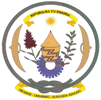|
THE ECONOMY, SECTORAL CONTEXT AND IFAD STRATEGY
The Economy and Rural Sector
Rwanda is a resource-poor, overpopulated country. Its
population of about eight million is predominantly rural (90%) and growing
at approximately 3% per year. The genocide of 1994 resulted in the destruction
of much of the country’s social and economic infrastructure, human
resource base and institutional capacity. The situation returned to normal
with the restoration of peace and the return of refugees in 1995/96. The
gross domestic product (GDP) in 1996 stood at only 72% of the 1990 level.
Per capita income, which was USD 250 in 1993, fell to USD 180 in 1996
but had risen to USD 230 by 2001. Following the Government’s policy
reforms to stimulate economic recovery, growth has been sustained. Fiscal
balances improved substantially as a result of tax reform, prudent fiscal
policies, recovery of exports and massive inflows of external grants and
loans on highly concessional terms. The external value of the Rwandan
franc has remained relatively stable. Nonetheless, low coffee prices and
high petroleum prices have exerted significant pressure on the balance
of payments.
Farming is the principal economic activity of the Rwandan
people and agriculture is practised on all land types, including land
of marginal quality and steep slopes. Rwanda’s agricultural growth
of 0.5% per annum in the 1980s dropped to minus 3.9% in the 1990s. While
production of the main crops has increased, yields have in many cases
fallen. Much of the production increase has been achieved through expanding
the cultivated area rather than through improved productivity. The slow
economic growth in the agricultural sector reflects a constrained resource
base, declining soil fertility and little use of modern inputs. Recognizing
the limited opportunities for further employment in agriculture, the Government
has adopted a policy of stimulating off-farm non-agricultural activities
to increase rural income levels.
In its Vision 2020 and the Poverty Reduction Strategy,
the Government identified six key objectives. In the context of this project
the most pertinent are: rural and agricultural development to generate
income outside agriculture and introduce new technologies; private sector
promotion, including encouraging the formal organization of informal enterprises;
human resource development; raising education levels and addressing HIV/AIDS
issues (with a particular focus on gender); and improved governance, including
decentralization and sectoral strategies.
|





